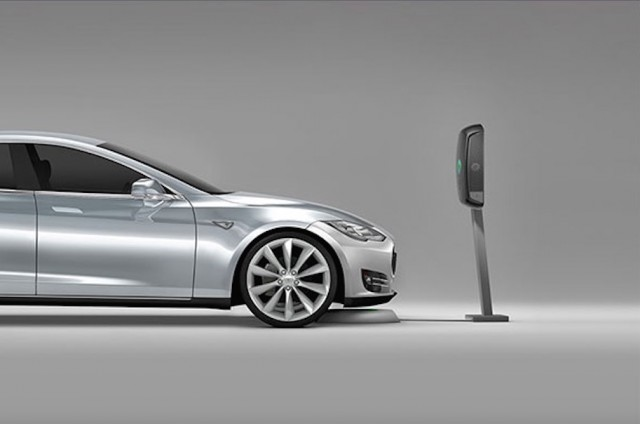As we cruise into 2024, the electric vehicle (EV) industry is steering towards a groundbreaking shift with the advent of wireless EV charging. Imagine pulling into your driveway and your car starts charging without the need for cables. This isn’t a scene from a sci-fi movie; it’s becoming a reality. According to a report by Bloomberg Green, wireless charging is poised to revolutionize how we power our electric vehicles, making the process more convenient and efficient than ever before. In this article, we’ll explore how wireless EV charging works, its benefits, the current state of the technology, and where it’s headed in the near future.
How Wireless EV Charging Works
Wireless EV charging, also known as inductive charging, utilizes electromagnetic fields to transfer energy between two objects through coils. Here’s how it breaks down:
- Inductive Charging Pads: Installed on the ground, these pads create an electromagnetic field.
- Receiver Coils: Located on the underside of the vehicle, these coils receive the magnetic energy and convert it back into electrical energy to charge the battery.
- Efficiency: Modern systems boast efficiency rates between 90% to 95%, comparable to conventional plug-in methods.
This seamless technology eliminates the hassle of plugging in, making the charging process as simple as parking your car.
The Benefits of Wireless Charging
Wireless EV charging offers numerous benefits that could accelerate the adoption of electric vehicles:
- Convenience: No more fumbling with cables or worrying about wear and tear on charging ports.
- Safety: Reduced risk of tripping hazards and electric shock.
- Weather-Resistant: Charging pads can be insulated against rain and snow, offering reliable charging in all weather conditions.
- Urban Mobility: Ideal for urban areas where parking spaces are limited and tightly packed, as seen in cities like Amsterdam and Oslo.
Current State of Wireless EV Charging Technology
The wireless EV charging landscape is evolving rapidly, with several companies and automakers investing heavily in this technology. According to InsideEVs, major players like Hyundai, BMW, and Volkswagen are already testing or implementing wireless charging solutions.
Leading Companies and Innovations
- WiTricity: A pioneer in wireless charging, WiTricity is collaborating with various automakers to standardize wireless charging solutions.
- Plugless Power: This company offers aftermarket wireless charging systems compatible with popular EV models like the Tesla Model S and Nissan Leaf.
- Momentum Dynamics: This company has developed high-power wireless charging systems suitable for buses and commercial fleets.
Real-World Applications
In 2023, Germany launched the world’s first wireless charging road in Karlsruhe, an initiative that InsideEVs hailed as a game-changer for public transit systems. This innovation allows electric buses to charge while on the move, significantly reducing downtime and operational costs.
Practical Guide to Wireless EV Charging
As wireless charging becomes more prevalent, here’s how you can prepare to embrace this technology:
How to Charge Wirelessly
- Installation: Ensure your vehicle is compatible with wireless charging. Contact your car dealer or a certified installer to set up the charging pad at your home or workplace.
- Alignment: Properly align your vehicle over the charging pad for optimal energy transfer. Some systems offer automatic alignment features.
- Monitoring: Use a smartphone app to monitor charging status and efficiency.
Where to Buy Wireless Charging Systems
- Authorized Dealers: Purchase systems directly from your car manufacturer or authorized dealers to ensure compatibility.
- Online Retailers: Websites like Amazon and Best Buy offer aftermarket wireless charging solutions. Check customer reviews and product specifications before purchasing.
What to Compare
When selecting a wireless charging system, consider:
- Efficiency Rating: Look for systems with higher efficiency to reduce energy loss.
- Compatibility: Ensure the system is compatible with your EV model.
- Installation Costs: Factor in the cost and complexity of installation.
The Future of Wireless EV Charging
As we look towards the future, wireless EV charging is set to play a pivotal role in the broader adoption of electric vehicles. By 2025, Bloomberg Green predicts that 20% of all new public charging stations will offer wireless options. This shift will facilitate faster EV adoption, particularly in urban areas where infrastructure is continuously evolving.
Key Takeaways
- Wireless EV charging is transforming the electric mobility landscape by offering unparalleled convenience and efficiency.
- Major automakers and tech companies are investing heavily in this technology, with real-world applications already in place.
- By 2025, wireless charging is expected to become a standard feature in many new EVs and public charging stations.
Call to Action
Are you ready to leave cables behind and embrace the future of wireless EV charging? Share your thoughts in the comments below or reach out to your local dealership to learn more about how you can upgrade your charging setup. As we charge into 2024, the promise of a cable-free world is more tantalizing than ever. Keep an eye on this space as technology continues to advance, bringing us closer to a seamless and sustainable future.
In conclusion, wireless EV charging represents a significant leap forward in the quest for more efficient and user-friendly electric vehicle solutions. The transition to a fully wireless system might seem daunting, but the benefits far outweigh the challenges. As infrastructure improves and technology becomes more accessible, the dream of effortless, cable-free charging is well within reach. Let’s drive into this exciting new era together!

